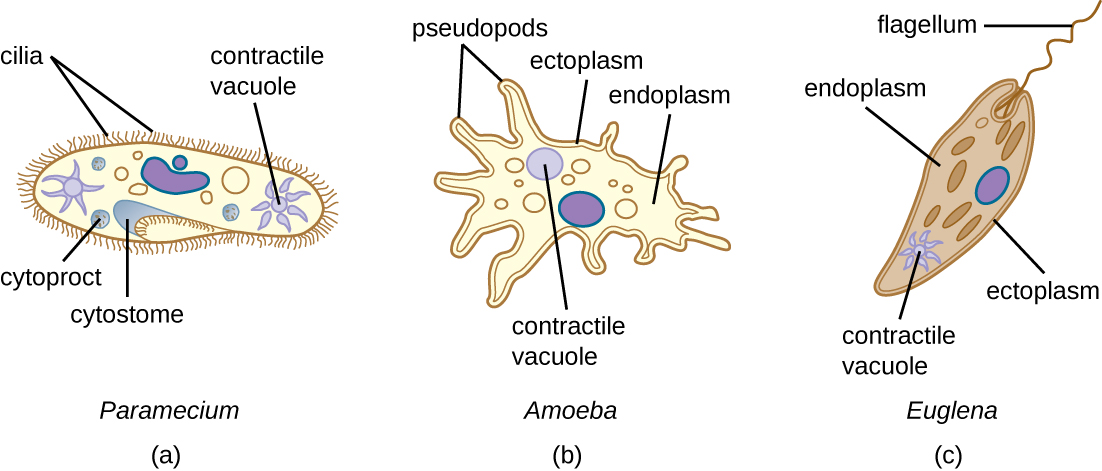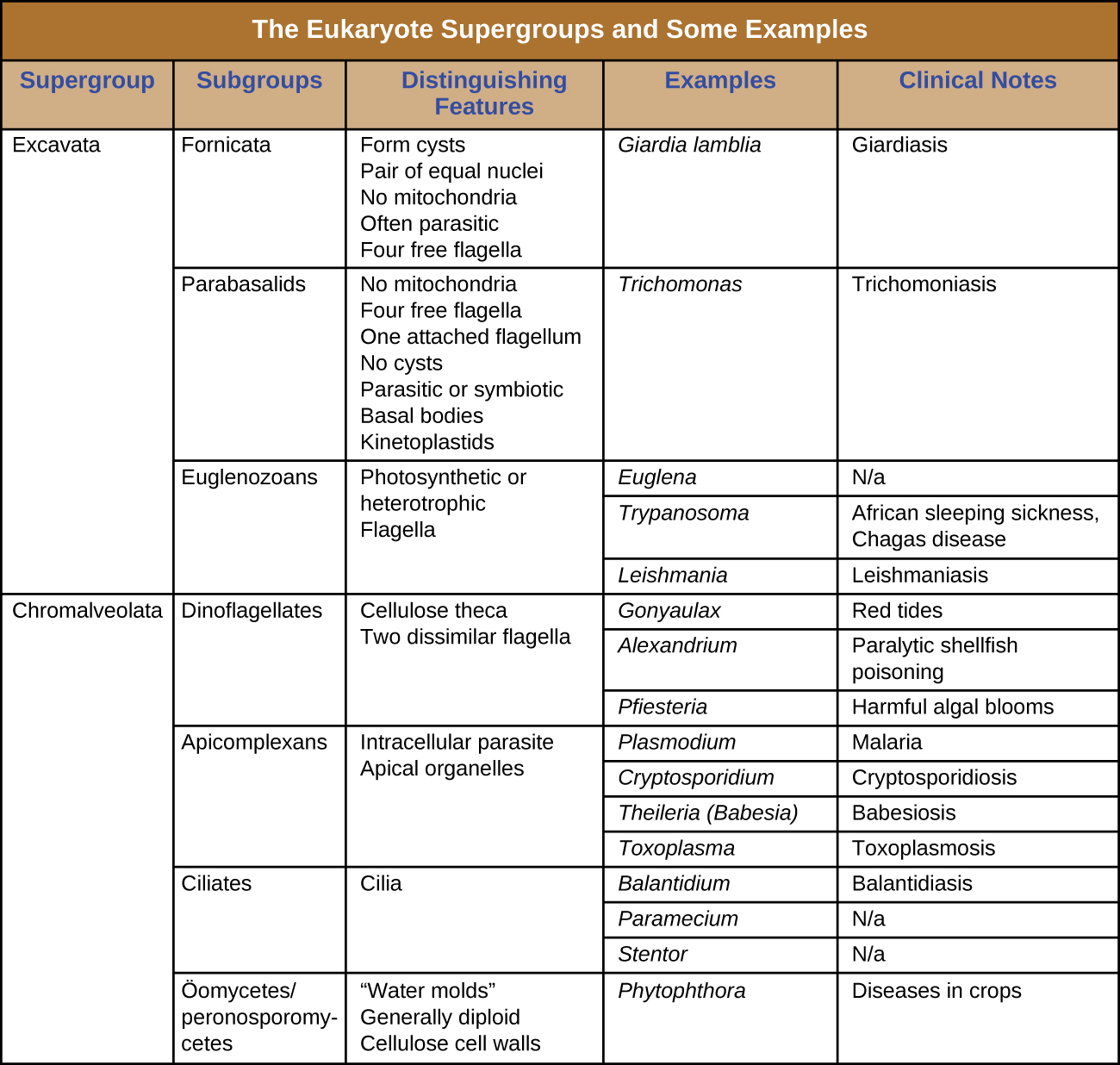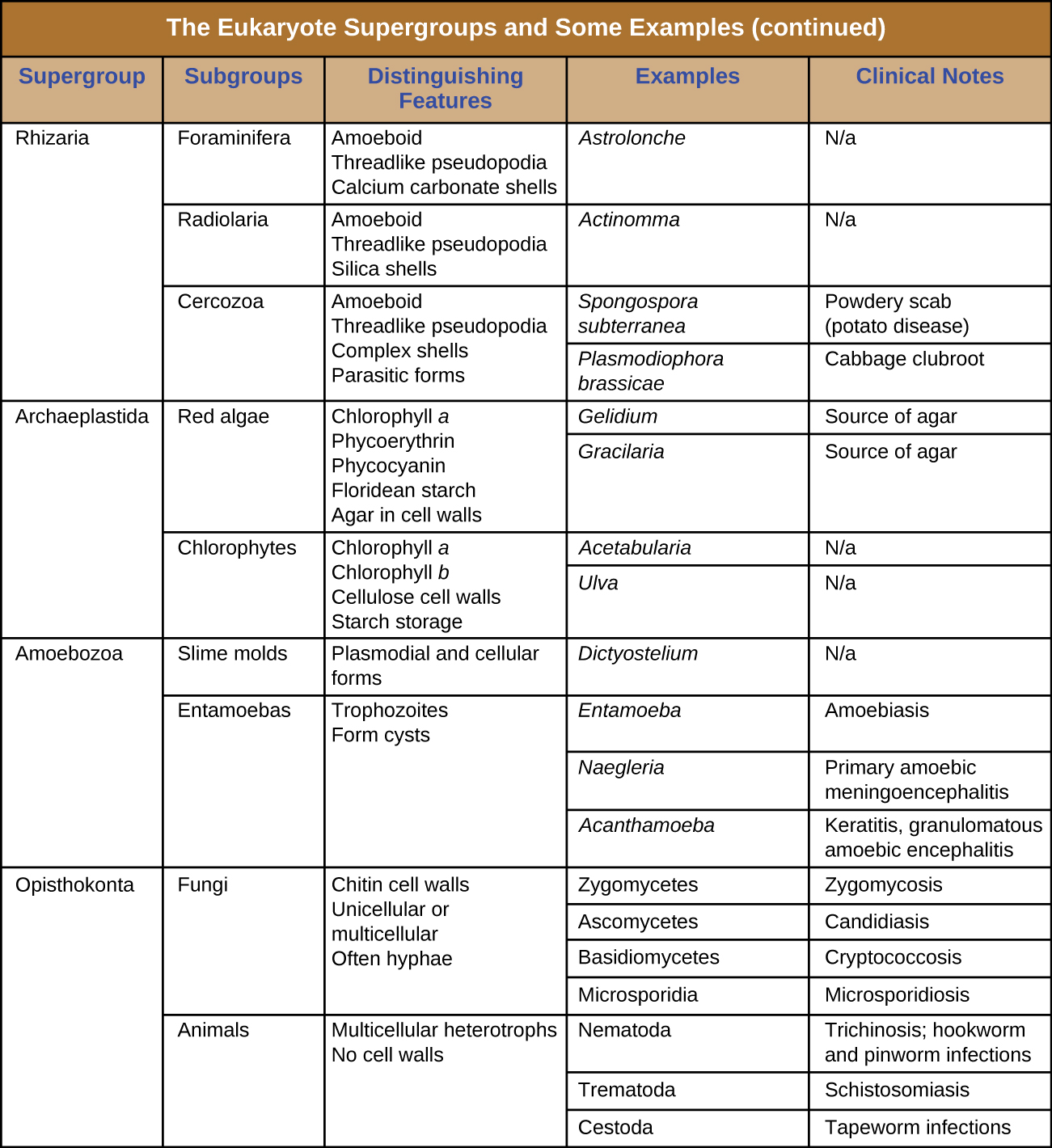| << Chapter < Page | Chapter >> Page > |
Many protists have whip-like flagella or hair-like cilia made of microtubules that can be used for locomotion ( [link] ). Other protists use cytoplasmic extensions known as pseudopodia (“false feet”) to attach the cell to a surface; they then allow cytoplasm to flow into the extension, thus moving themselves forward.
Protozoans have a variety of unique organelles and sometimes lack organelles found in other cells. Some have contractile vacuole s , organelles that can be used to move water out of the cell for osmotic regulation (salt and water balance) ( [link] ). Mitochondria may be absent in parasites or altered to kinetoplastids (modified mitochondria) or hydrogenosomes (see Unique Characteristics of Prokaryotic Cells for more discussion of these structures).

The protists are a polyphyletic group, meaning they lack a shared evolutionary origin. Since the current taxonomy is based on evolutionary history (as determined by biochemistry, morphology, and genetics), protists are scattered across many different taxonomic groups within the domain Eukarya. Eukarya is currently divided into six supergroups that are further divided into subgroups, as illustrated in ( [link] ). In this section, we will primarily be concerned with the supergroups Amoebozoa , Excavata , and Chromalveolata ; these supergroups include many protozoans of clinical significance. The supergroups Opisthokonta and Rhizaria also include some protozoans, but few of clinical significance. In addition to protozoans, Opisthokonta also includes animals and fungi, some of which we will discuss in Parasitic Helminths and Fungi . Some examples of the Archaeplastida will be discussed in Algae . [link] and [link] summarize the characteristics of each supergroup and subgroup and list representatives of each.



The supergroup Amoebozoa includes protozoans that use amoeboid movement. Actin microfilaments produce pseudopodia , into which the remainder of the protoplasm flows, thereby moving the organism. The genus Entamoeba includes commensal or parasitic species, including the medically important E. histolytica , which is transmitted by cysts in feces and is the primary cause of amoebic dysentery . The notorious “brain-eating amoeba,” Naegleria fowleri , is also classified within the Amoebozoa. This deadly parasite is found in warm, fresh water and causes primary amoebic meningoencephalitis (PAM) . Another member of this group is Acanthamoeba , which can cause keratitis (corneal inflammation) and blindness.

Notification Switch
Would you like to follow the 'Microbiology' conversation and receive update notifications?